How we used a century of data to create a modern, digital geologic map of Alaska
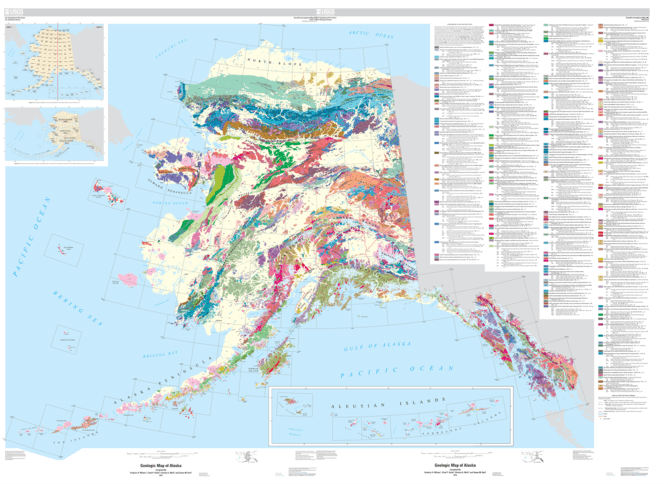
Since William Smith's publication of the first geologic map of England in 1815, geologists have used maps to show the distribution and character of rocks at the Earth's surface, and display their interpretations of the underlying geology. These maps help guide exploration for natural resources and help users understand natural hazards and ecosystems.
When my colleagues and I began working on a new geologic map of Alaska in the late 1990s, we decided to structure it quite differently from the previous version, published back in 1980. This time around, we'd tap into Geographic Information Systems (GIS) technology. Though what we recently released is called the Geologic Map of Alaska, it's really a database from which many different maps can be created.
The advent of digital methods has revolutionized mapping. Printed maps are limited in how much they can show before the amount of detail obscures meaning. They're also restricted to a single view of the information. Digital maps can store and display a variety of information, allowing users to focus on the characteristics of interest. Using GIS and digital data, many different maps can be created and displayed, allowing users of our new Alaska database to choose which aspects to display.
New compilation of more than a century of data
The United States is divided into quadrangles for mapping purposes; in Alaska, each measures one degree of latitude by two or three degrees of longitude – about 70 by 100 miles. Alaska is composed of 153 of these quadrangles. We started compiling a database and digitizing 1:250,000-scale quadrangle geologic maps, for which about two-thirds of the 153 quadrangles had been published. Many of these geologic maps had been completed after release of the 1980 map. We also found unpublished compilations for some additional quadrangles.
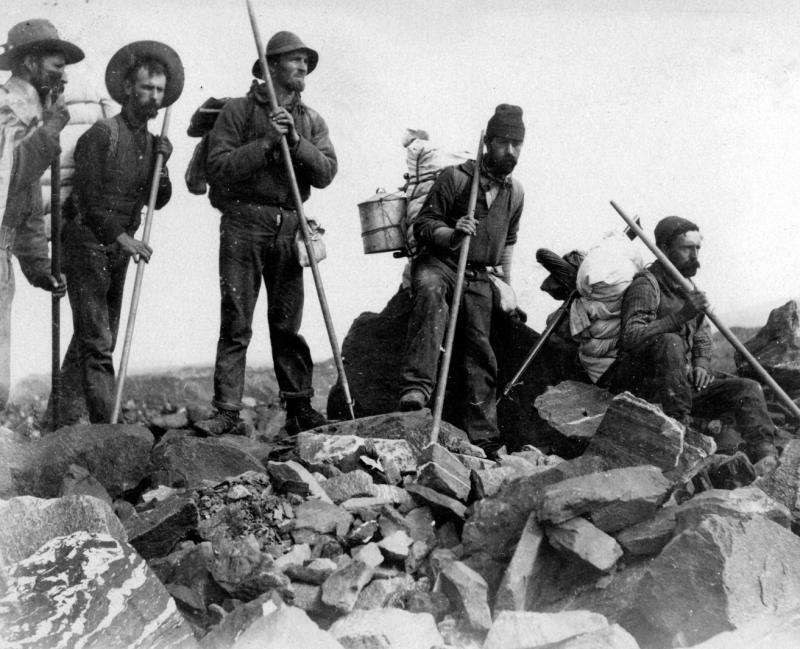
Then we added data from other available sources – maps published at other scales, journal articles, original field notes, aerial photos, Google Earth and new fieldwork. We scoured any sources we could think of that might have geological data about Alaska for inclusion in our new map, even going back to some of the Russian writings from prior to the Alaska purchase in 1867.
Having worked in Alaska for many years, I understand how little we know about the geology of Alaska compared to the conterminous U.S., due to factors including its vast size, its low population and limited infrastructure, and the complexity of its geology. Yet I was surprised how much we do know, just hidden away in forgotten or obscure documents.
Our sources span more than 100 years of data collection by a large number of geologists, each with a particular perspective. Many of the early geologic expeditions were limited in what they could see as they traveled; in general, there was no going back if you saw something today that made you want to take another look at something you saw two days ago. Often early expeditions were also producing the topographic maps as they went.
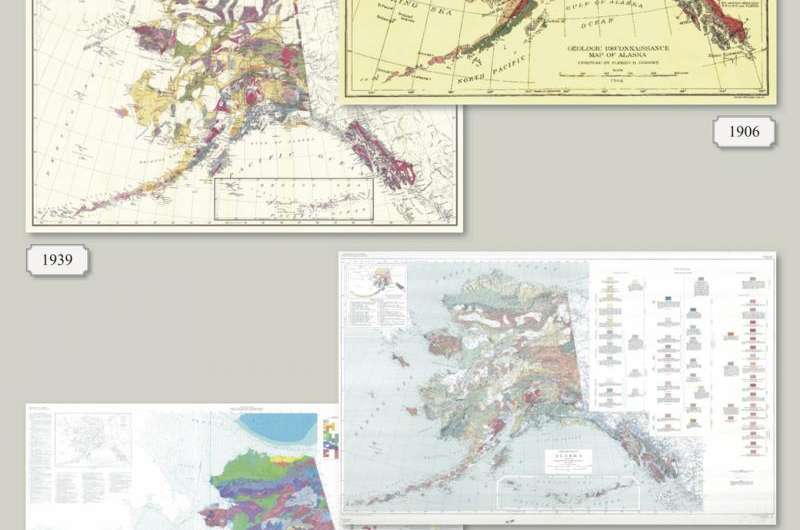
Each geologist was influenced by personal experience and the paradigms of the time. Prior to the advent of radioactive dating techniques, determining the age of rock units was dependent on finding fossils and understanding the geologic structures and stratigraphy. For instance, Father Hubbard, the "Glacier Priest," studied the geology along the Alaska Peninsula in the 1930s. Noting the coal beds, he thought the chain of volcanoes along the peninsula were due to the burning of coal deep underground. The advent of plate tectonic theory explains the volcanoes as a result of subduction and fits them into larger framework. While the presence of the volcanoes hasn't changed, how we explain them has. I had to try to get into each geologist's head, to attempt to understand what they saw and how the clues in the data they collected in the past could be interpreted within a modern plate tectonic paradigm.
Other challenges included determining precise locations from hand-drawn or reconnaissance maps. These early maps might not have complete contour lines; one map area I worked on had some mountains in the wrong spots and others were even missing. Essentially sketches, they were the best that could be done at the time.
We also had to deal with reconciling the many different styles of geologic maps produced over the decades, along with poorly registered illustrations and lack of sample location information in published literature. For example, an early map of the Ruby quadrangle in west central Alaska was based on a crude, exploratory-quality topographic map; we had to redraw it, trying to more accurately locate geologic features, before we could digitize it.
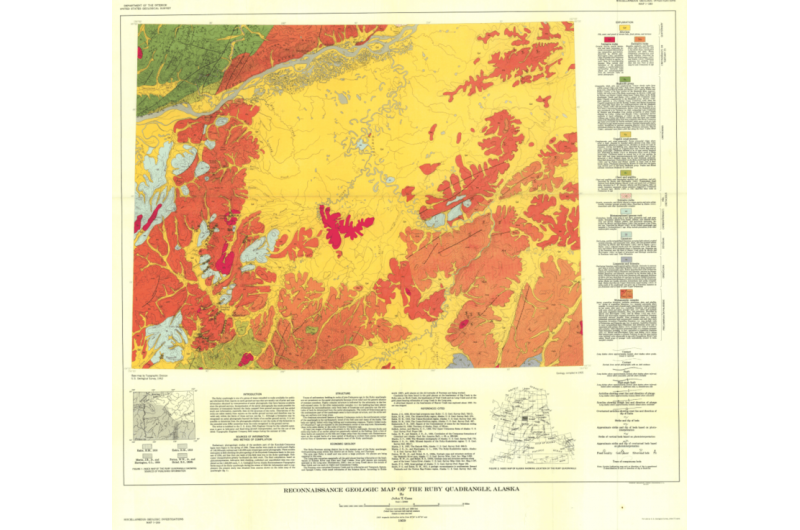
Based on local geology, we compiled over 15,000 map units from the source maps. Each map unit was defined by distinctive rock units, using characteristics such as age, rock type and environment of formation – beach deposit versus deep ocean, for instance, or lava flow versus granite. By grouping similar map units together, we were able to reduce these to 1,350 unique map units. Further reduction resulted in about 450 map units for the detailed digital release and a generalized 220 units for the eventual print version. The resulting map divides the state along geologic characteristics rather than divided into units based on longitude and latitude.
The published digital map allows the user to zoom from the generalized version to the detailed version. The associated database contains more than a dozen interrelated tables that make this release special; and unlike previous print-only releases, the database is designed to be updated.
Though I drove the effort, I stood on the shoulders of giants. Current USGS staff and volunteers and nearly a dozen retired USGS staff (Emeritus) contributed to the effort. Digital support came from many, as we had to capture data, design the spatial databases and package the data for release.
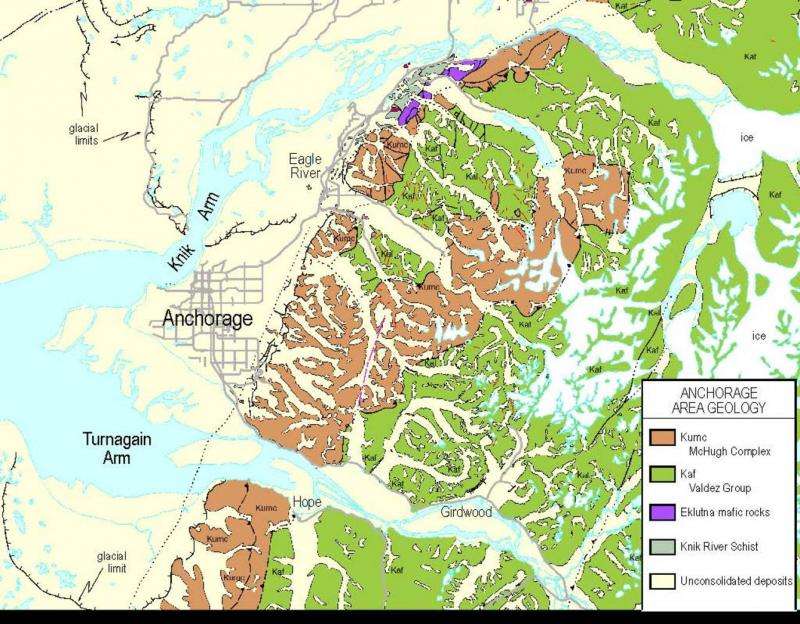
A geologic map for the 21st century
Previous generations commonly used hand-drawn overlays to display different types of map data. To discover relationships between data types, geologists had to mentally visualize these relationships or draw new maps.
Today, with GIS, this process can be computer-aided. Choosing the data to display, GIS-capable users can generate derivative maps, or query the map and database for a variety of characteristics. GIS allows the user to explore relationships between data sets, test theories and otherwise use this geologic database of Alaska as an analysis tool. Users can incorporate additional data – for example, geochemical analyses – to characterize geologic units. Alternatively, a user could compare plant distributions with underlying geology to evaluate potential relationships.
The map and database are analogous to a map that shows the roads, but not the route. It doesn't tell you which path to take until you figure out where you're going. Like a spreadsheet, this map allows the user to ask questions.
As designed, the map is intended for a wide audience, from Alaska Native Corporations and land management agencies to academic institutions and mining and energy companies. This map provides a broad overview, as well as detailed information, which enhance a user's ability to search for patterns and trends otherwise not apparent, and its digital form aids users in incorporating other data sets.
Source: The Conversation
This story is published courtesy of The Conversation (under Creative Commons-Attribution/No derivatives).![]()





















